Etsu Egami Talk at Asia Society “The third generation of post war contemporary artists in Japan”
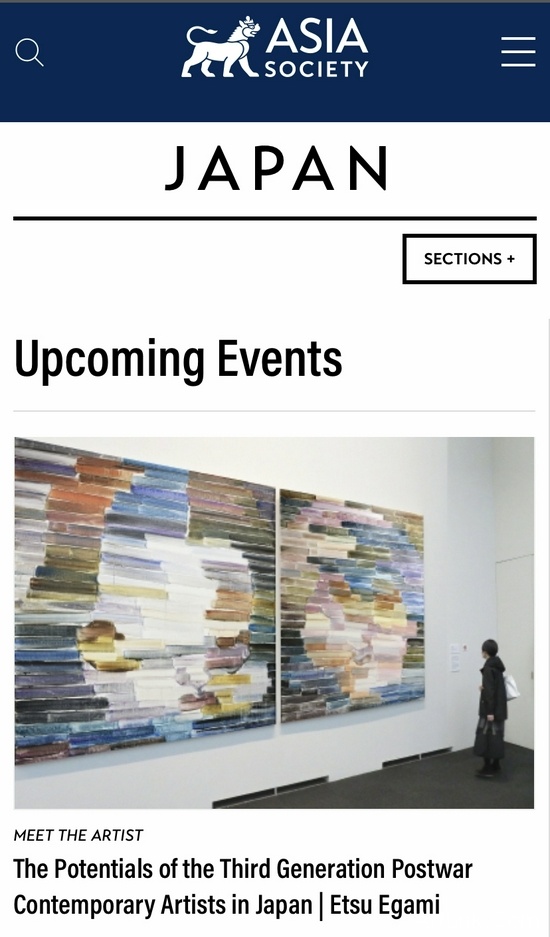 讲座介绍 Poster of Etsu Egami talk in Asia Society
讲座介绍 Poster of Etsu Egami talk in Asia Society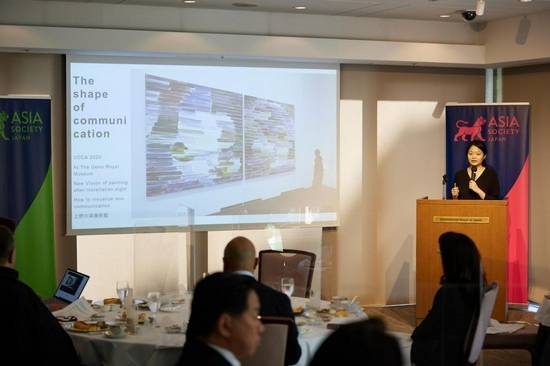 江上越(Etsu Egami)在亚洲协会的讲座 ©2021 Taishi Yokotsuka for Asia Society Japan Center
江上越(Etsu Egami)在亚洲协会的讲座 ©2021 Taishi Yokotsuka for Asia Society Japan Center亚洲协会
亚洲协会(Asia Society)邀请江上越作为日本第三代艺术家代表做了题为“日本第三代战后当代艺术家的可能性”的讲座。此次讲座是亚洲协会主办,日方秘书长日高佐和子主持,推荐人是亚洲协会理事,日本DIC川村美术馆会长川村喜久,整个讲座全部使用英文。
亚洲协会(Asia Society)是1956年由洛克菲勒家族的约翰·D·洛克菲勒创办的非营利、非政府、无党派的民间机构组织,总部位于纽约,在纽约有着独立的美术馆。同时在洛杉矶,旧金山,苏黎世,香港、东京、韩国、菲律宾等有亚洲协会分部,是美国最有影响力的和亚太地区文化的对话窗口。其宗旨在于促进美国与亚洲之间的民间交流,增进美国及亚太地区的艺术文化、机构之间的相互了解,共享繁荣未来。
Asia Society
The Asia Society invited Etsu Egami as a representative of the third generation of Japanese artists to give a lecture entitled “The potential of the third generation of postwar contemporary artists in Japan”。 This talk was held by the Asia Society and hosted by the Japanese Secretary-General Sawako Hidaka。 The recommender was the member of the Asia Society and Yoshihisa Kawamura, the president of the DIC Kawamura Art Museum in Japan。 The entire lecture was all in English。
The Asia Society is a non-profit, non-governmental, non-partisan civil organization founded by John D。 Rockefeller of the Rockefeller family in 1956。 It is headquartered in New York and has an independent art museum in New York。 At the same time, there are Asia Society branches in Los Angeles, San Francisco, Zurich, Hong Kong, Tokyo, South Korea, the Philippines, etc。, which are the most influential dialogue window between the United States and the culture of the Asia-Pacific region。 Its purpose is to promote people-to-people exchanges between the United States and Asia, enhance mutual understanding between art, culture, and institutions in the United States and the Asia-Pacific region, and share a prosperous future。
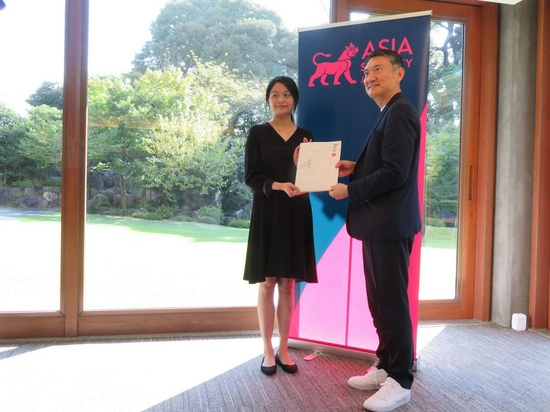 讲座现场 川村喜久(Kawamura Yoshihisa)颁奖江上越 Etsu Egami and Mr.Kawamura Yoshihisa
讲座现场 川村喜久(Kawamura Yoshihisa)颁奖江上越 Etsu Egami and Mr.Kawamura Yoshihisa讲座嘉宾江上越介绍
江上越出生东京,今年入榜福布斯亚洲30岁以下30位精英榜。
幼儿时在欧美长大的她,在中央美术学院,德国卡尔斯鲁厄艺术与设计学院留学,目前在中央美术学院攻读博士课程。丰富的国际经历,带给了她对于交流的探索。她通过可视化误听,误视,探索交流的可能性。巴黎蓬皮杜艺术中心的策展人Julie Champion谈到“江上越的创作之美不仅仅是把这些特异性作为误解,而是人类创造性的源泉和财富。”
目前江上越的作品参加了古根海姆美术馆的理事会活动,近期的个展有“Facebook”纽约ChambersFineArt, “Social Distancing”巴黎 A2Z Gallery,“一期一会”香港白石画廊,“彩虹”轻井泽新美术馆,“你的名字?”东京白石画廊银座新馆。
在此次讲座上,江上越介绍了她获得福布斯亚洲30 UNDER 30精英榜的以往的作品经历,分享了她今年受宾夕法尼亚州立大学的邀请,讲述题为“日本第三代当代艺术家”的话题解析了现在日本艺术界正在兴起的新浪潮----第三代艺术家。
Talk guest Etsu Egami
Etsu Egami was born in Tokyo, and this year she is listed on the Forbes Asia 30 Under 30 Elite List。
She grew up in Europe and the United States as a child, studied at the Central Academy of Fine Arts, Karlsruhe School of Art and Design, Germany, and is currently studying for a phd program at the Central Academy of Fine Arts。 Her international experience has brought her exploration of communication。 She explores the possibility of communication by visualizing mishearing and misunderstanding。 Julie Champion, curator of the Pompidou Centre in Paris, said that “The beauty of Etsu Egami‘s creation is not just a misunderstanding of these specificities, but the source and richness of human creativity。”
At present Ersu Egami’s works have participated in the activities of the Guggenheim Museum program “Visiting collection of Sam Shikiar”。 Recent solo exhibitions include “Facebook” ChambersFineArt in New York, “Social Distancing” A2Z Gallery in Paris, “Ichigo - Ichie” Hong Kong Whitestone Gallery H Queen’s, and “Rainbow” Karuizawa New Art museum, “Your name?” Tokyo Whitestone Gallery Ginza New space。
In this talk, Etsu Egami introduced her past experience of listed the Forbes Asia 30 UNDER 30 List, and shared her invitation by Pennsylvania State University this year to talk about the topic analysis entitled “Japan‘s third-generation contemporary artist” This is the new wave that is emerging in the Japanese art world-the third generation of artists。
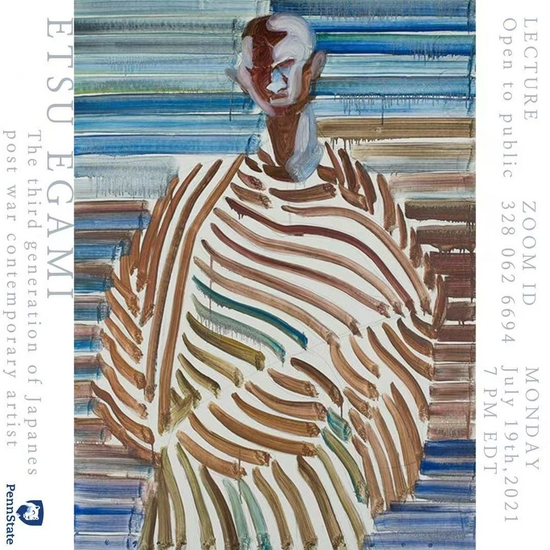 江上越在美国宾夕法尼亚州立大学的讲座海报 图片为江上越作品
江上越在美国宾夕法尼亚州立大学的讲座海报 图片为江上越作品Etsu Egami talk at Pennsylvania State University poster
第一代;战后的沉重的话题和东方思想
怎样区分日本战后当代艺术发展的阶段性?江上越谈到第一代的艺术家大部分是活跃于1950-70年代。大部分艺术家经历过战争,人类的悲惨历史。自然第一代艺术家的创作也会自然呈现出比较沉重的话题,同时也会出现否定过去,更偏向激进的前卫艺术。日本的具体派,物派可以归纳在第一代艺术家中。具体派的白发一雄是使用脚来创作,吉原治良在具体美术协会谈到“不要学别人,创造以往没有过的作品”,影响和推动了日本艺术界的前卫艺术热潮。
70年代的物派艺术家菅木志雄、李禹煥、小清水漸的作品,讨论物体之间的关系观念有着非常强的东方哲学思想,非常深沉,沉重。
The first generation:heavy topics and Eastern thought after the war
How to distinguish the stages of the development of post war contemporary art in Japan? Etsu Egami mentioned that most of the first generation artists were active in the 1950s and 70s。 Most artists have experienced wars and the tragic history of mankind。 Naturally, the creation of the first generation of artists will naturally present relatively heavy topics, and at the same time, there will be more radical avant-garde art that denies the past。 The Gutai and MONOHA in Japan can be summarized in the first generation of artists。 Kazuo Shiraga, the Gutai member used his feet to create works。 At the Gutai Art Association, Jiro Yoshihara said that “Don‘t learn from others and create works that you have never had before”, which influenced and promoted the avant-garde art craze in the Japanese art world。
The works of Kishio Suga, Lee-Ufan in the 1970s, discussing the relationship between objects, have very strong Eastern philosophical ideas, which are very deep and heavy。
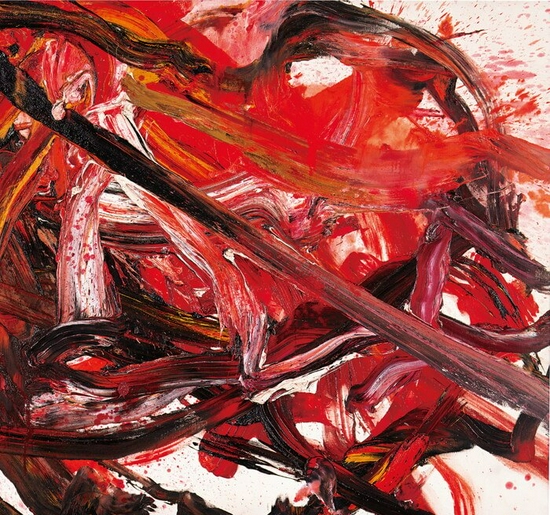 白发一雄作品 Works by Kazuo Shiraga
白发一雄作品 Works by Kazuo Shiraga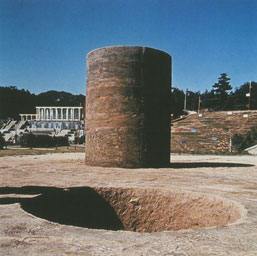 関根伸夫‘位相―大地’ Works by Sekine Nobuo
関根伸夫‘位相―大地’ Works by Sekine Nobuo第二代:国家符号性标签,卡通形象
相反,1980年代兴起的第二代艺术家的形式和第一代完全不同,他们的作品非常轻松。一眼就知道是卡通的、可爱的、漫画的、浮世绘的、日本符号性的标签性形象。第二代艺术家有村上隆,奈良美之,Mr。, 六角彩子等等。村上隆策展的Super Flat可以说是影响了许多艺术家。
The second generation: symbolic label of Nationalities, cartoon image
On the contrary, the form of the second generation of artists that emerged in the 1980s is completely different from that of the first generation, and their works are very relaxed。 At a glance, you can tell that it is a cartoon, cute, manga, Ukiyoe, and Japanese symbolic label image。 The second generation artists include Takashi Murakami, Nara Yoshitomo, Mr。, Ayako Rokkaku and so on。 It can be said that Super Flat curated by Takashi Murakami has influenced many Japanese artists。
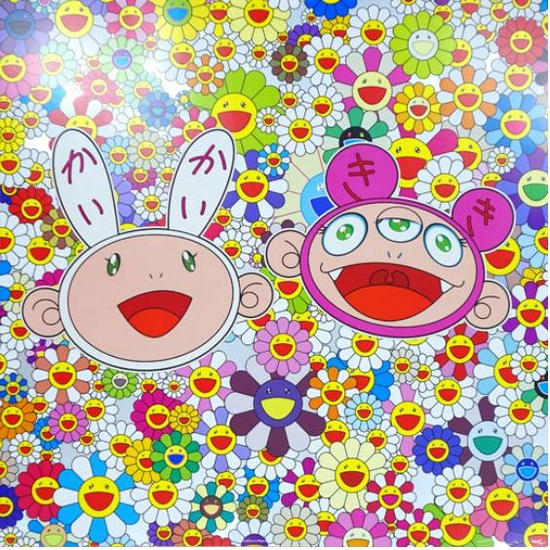 村上隆“Kaikai Kiki lots of fun”2009年Works by Takashi Murakami
村上隆“Kaikai Kiki lots of fun”2009年Works by Takashi Murakami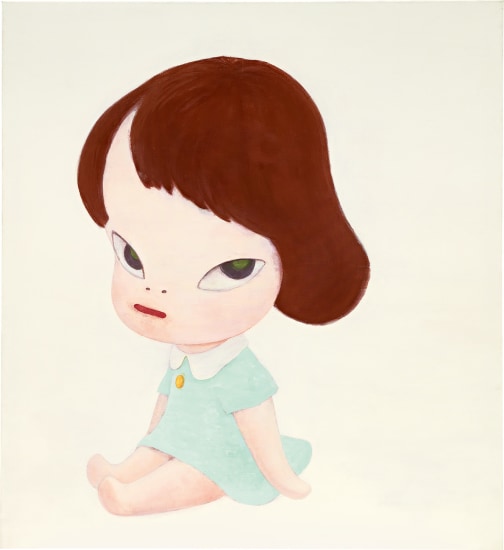 奈良美智 “Hot House Doll,In the White Room III”,1995年 Works by Nara Yoshitomo
奈良美智 “Hot House Doll,In the White Room III”,1995年 Works by Nara Yoshitomo第三代;摆脱标签和表面的符号,探讨人性,国际视野
第三代艺术家,不满足于标签性的表面的国家符号。这一代艺术家成长在国际化的时代,很多都有海外生活的经历,具有国际性视野,并不认为卡通,动漫是日本唯一的形象。他们更多的是从自己的亲身经历发现创作的突破口,探索更人性化的主题。既具有个人的私密性,又具有人类的共性。所以也是国际共同的主题。他们从个人的角度探索人类共同的问题,从体验凝视自身的内心世界,然后外化为自己的艺术形式。艺术家有加藤泉,五木田智央,江上越,等等。
The third generation: get rid of labels and superficial symbols, explore human nature, and have an international perspective
The third generation of artists are not satisfied with the labelled superficial national symbol。 This generation of artists grew up in an era of internationalization。 Many of them have experience living overseas and have an international perspective。 They do not think that cartoons and animation are the only images of Japan。 They are more about discovering breakthroughs in creation from their own personal experience and exploring more humane themes。 It has both personal privacy and human commonality。 So it is also a common international theme。 They explore the common problems of mankind from a personal perspective, stare at their inner world from experience, and then externalize into their own art form。 Artists include Kato Izumi, Gokita Tomohiro, Etsu Egami, and so on。
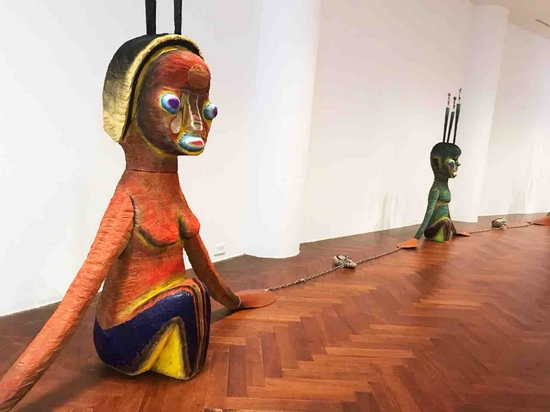 加藤泉 作品 Works by Izumi Kato
加藤泉 作品 Works by Izumi Kato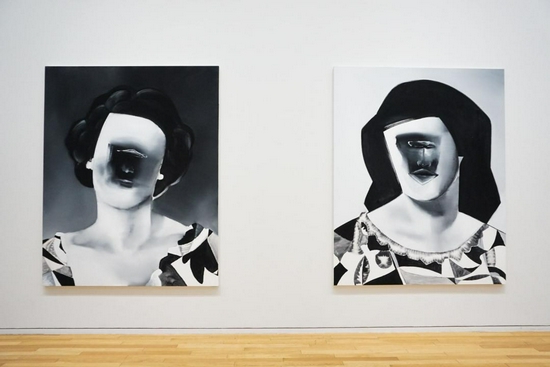 五木田智央作品 Works by Tomoo Gokita
五木田智央作品 Works by Tomoo Gokita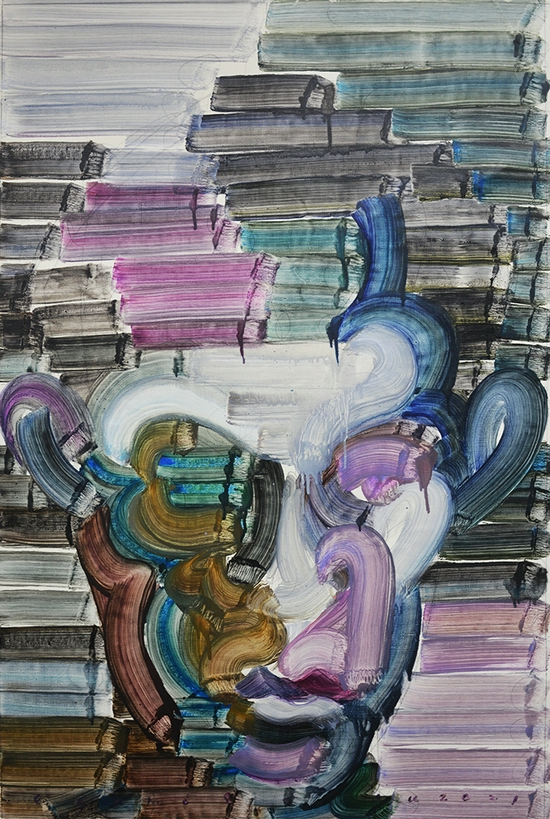 江上越作品 《彩虹》2021,Works by Etsu Egami, Sam Shikiar Collection(古根海姆美术馆理事)
江上越作品 《彩虹》2021,Works by Etsu Egami, Sam Shikiar Collection(古根海姆美术馆理事)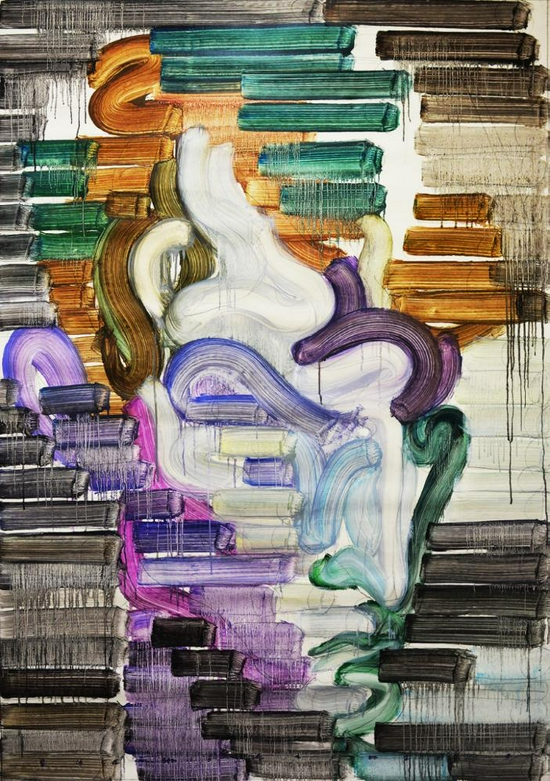 江上越作品《擦肩而过的诱惑》,2021,和美术馆收藏 Works by Etsu Egami, He Art Museum
江上越作品《擦肩而过的诱惑》,2021,和美术馆收藏 Works by Etsu Egami, He Art Museum江上越谈到第三代艺术家的出现并不只是日本的动态。江上越今年被日本文化厅作为杰出艺术家派遣去纽约考察。与美国重要美术馆的策展人座谈交流,包含大都会博物馆的主策展人John Carpenter,MOMA纽约现代美术博物馆的主席策展人Sarah Suzuki,助策展人Samantha Friedman,Dia Beacon的主策展人Alexis Lowry,古根海姆美术馆的三星亚洲艺术高级策展人兼全球艺术高级顾问孟璐(Alexandra Monroe),波斯顿美术馆首席策展人喻瑜(Christina Yuyu),高级策展人 Nancy Berliner,高级策展人Anne Nishimura Morse等等。
美国策展人认为日本的三代艺术家有着明显的国际特质,包括第一代有着和美国抽象表现主义的影响,也可以说第二代有着波普艺术或是消费艺术的影响。那么欧美的年轻一代艺术家也是和日本第三代有着共同点,所以第三代艺术家的出现并不只停留在日本,而是全球性的第三代艺术动向。
Etsu Egami said that the emergence of third-generation artists is not just a dynamic in Japan。
Etsu Egami was sent to New York as an outstanding artist by the Agency for Cultural Affairs of Japan Government this year。 Discussions and exchanges with the curators of major American art museums, including John Carpenter, the chief curator of the Metropolitan Museum, Sarah Suzuki, the chairman curator of the MOMA Museum of Modern Art in New York, the assistant curator Samantha Friedman, and the chief curator of Dia Beacon Alexis Lowry, Samsung Asian Art Senior Curator and Global Art Senior Advisor at the Guggenheim Museum Alexandra Monroe, Boston Art Museum Chief Curator Christina Yuyu, and Senior Curator Nancy Berliner, senior curator Anne Nishimura Morse, etc。
American curators believe that the three generations of Japanese artists have obvious international characteristics, including the first generation with the influence of American abstract expressionism, and it can also be said that the second generation has the influence of pop art or consumer art。 Then the younger generation of artists in Europe and the United States also have something in common with the third generation of Japan。 Therefore, the emergence of the third generation of artists does not stop in Japan, but is a global third-generation artistic trend。
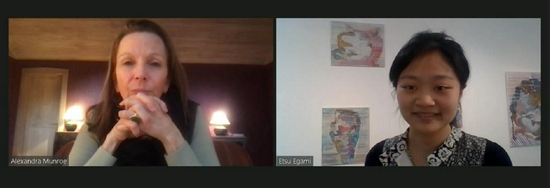 对话; 古根海姆美术馆的三星亚洲艺术高级策展人兼全球艺术高级顾问孟璐(Alexandra Monroe)与江上越(Etsu Egami)
对话; 古根海姆美术馆的三星亚洲艺术高级策展人兼全球艺术高级顾问孟璐(Alexandra Monroe)与江上越(Etsu Egami)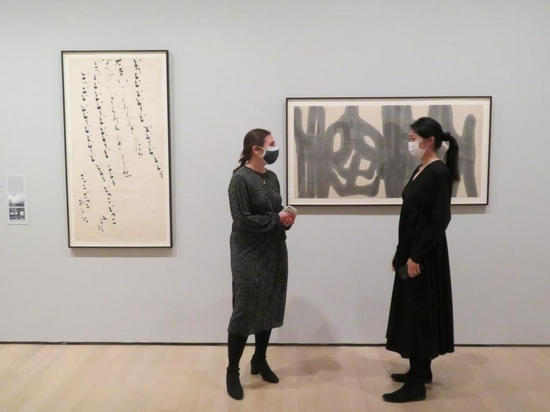 对话; MOMA策展人Samantha Friedman与江上越(Etsu Egami)
对话; MOMA策展人Samantha Friedman与江上越(Etsu Egami)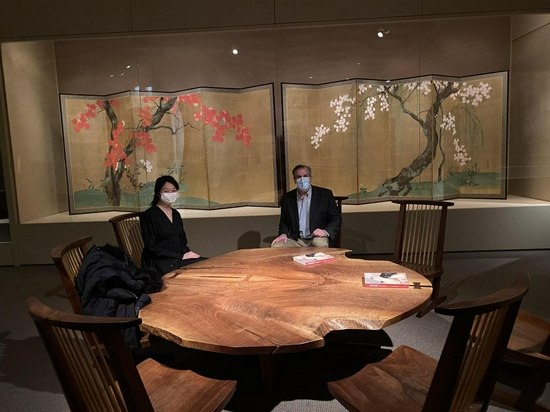 对话; 大都会博物馆策展人John Carpenter与江上越(Etsu Egami)
对话; 大都会博物馆策展人John Carpenter与江上越(Etsu Egami)此次讲座可以在官方网站中看到全视频历史记录。
https://asiasociety.org/video/art-breakfast-2021-potential-third-generation-postwar-contemporary-artists-japan
The Potentials of the Third Generation Postwar Contemporary Artists in Japan | Etsu Egami | Asia Society
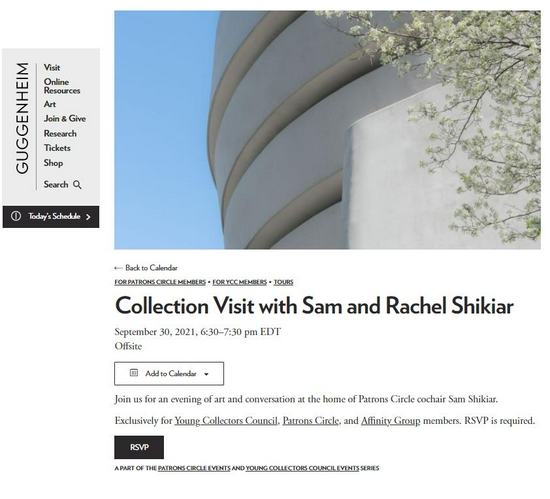 江上越作品参加纽约古根海姆美术馆理事会项目
江上越作品参加纽约古根海姆美术馆理事会项目注:本页面上发表的所有内容原自网络,均为原作者的观点,不代表艺连网的立场,也不代表艺连网的价值判断。


